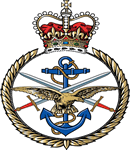Commemorated: | |||
| 1. Grave: | Kranji War Cemetery | 37. F. 3. | |
| 2. Book: | The (1921) Masonic Roll of Honour 1914-1918 | Pg.120 | |
| 3. Memorial: | The (1940) Scroll - WW1 Roll of Honour | 23D GQS | |
Awards & Titles: | |||
Education & Career :
Professional Soldier
Service Life:
Campaigns:
- The First World War 1914-1918, World-wide.
| Unit / Ship / Est.: Johore Military Forces |
| Action : The Singapore (Sepoy) Uprising 1915 |
An article in The Daily Mail on 13th April, 1915 gives an account of the Singapore Mutiny in which Capt. H. Cullimore and Corporal Sexton were murdered by mutineers:
Singapore Mutiny 1915
At 3:30 p.m. on Monday 15th February, 1915, 815 men of the Indian Army's 5th Light Infantry Battalion with 100 men of the Malay States Guides Mule Battery mutinied. They broke out of their barracks and fired on a group of five British officers, killing three. The other two escaped and ran off to get help. They managed to get sufficient force together from other units in the barracks to drive off the mutineers. A party of 100 mutineers went to Tanglin Barracks where 309 Germans were interned, including members of the Emden's crew. The mutineers fired on the guards without warning, killing all of them, but not before one brave guard managed to run across the courtyard under heavy fire to raise the alarm. The mutineers tried to persuade the Germans to join them but only 17 plus 3 Dutchmen joined them. The rest refused to have anything to do with what they considered a dishonourable act, and stayed where they were.
Other mutineers went on a killing spree at Keppel Harbour and Pasir Panjang killing many men and women including a judge. All white women and children were rowed out to boats as protection. It was getting dark by this time and the authorities finally were getting organised. Marines and crew from HMS Cadmus came ashore and were mobilised with other garrison troops who had not mutineed. A radio message was sent to India and any allied warship for help. In the meantime, the mutineers were laying siege to the bungalow of the commander, Colonel Martin, which was effectively blocking the way into Singapore Town. The Colonel and some men held out all night until they were relieved at daybreak by armed volunteers and civilians. They were so successful that they captured a fair amount of the mutineers' artillery. This action cost one killed and five wounded. The mutineers scattered and despite heavy sniper fire from the mutineers, the general population stayed calm as the militia fought sporadic battles with the mutineers. Fort Siloso defences played a role in the mutiny. Searchlights situated on Blakang Mati were used to illuminate parts of Singapore Island to aid loyal troops in quelling the mutiny.
On Wednesday 17th February, the French cruiser Montcalm followed by smaller Russian and Japanese warships arrived. They immediately unloaded a large number of Marines who immediately advanced on the mutineers. A sharp battle ensued in which the mutineers came off second best. A large number of them surrendered immediately, the rest scattered into the jungle. A large number tried to escape across the Strait of Johore but were immediately rounded up by the Sultan of Johore's army. In the meantime, the mutineers who had scattered continued to wage a sniping war on the allies. On Saturday 20th February, six companies of the 5th Shropshire Territorials arrived from Rangoon, relieving the sailors and Marines. They rounded up the last of mutineers in a short time. Monday 22nd February saw the opening Courts Martial. These resulted in a large number of the mutineers being shot in public. Some mutineers escaped to mainland but were hunted down by Dayak headhunters.
Of 915 mutineers many were later executed and the renmants of the battalion was moved to Africa. The largest of these executions saw a firing party of 110 shooting 22 mutineers. The mutineers who surrendered early were sent to fight in Africa against Von Lettow Vorbeck. A leading Indian merchant was implicated in the plot and was proved to have sent messages to the Turkish Consul in Rangoon offering him help by encouraging the Indian garrison in Singapore to mutiny. He was shot for his actions. The first major involvement for the Singapore Volunteer Corps SVRC was the Mutiny their contribution being the retaking Alexandra Barracks from the mutineers, occupying the Tanglin Detention Barracks unopposed and taking charge of the German POWs. Boy Scouts rendered valuable service by taking over from the police and army the duties of dispatch riders, telephone operators and clerks. Final casualties were: British 33 military 14 civilians French 1 wounded Russian 3 wounded The mutiny lead to the compulsory military training of all Britons aged 18 to 55 in Singapore
Detail :
A memorial in St Andrew's Cathedral is inscribed "In memory of Captain & 2nd in Command Horace Cullimore, Staff - Johore Military Forces Late Royal Marine Artillery Born 11 November 1869 Killed at Tanglin 15 Feby, 1915. Erected by the Sergeants Mess RM Artillery."
Masonic :
| Type | Lodge Name and No. | Province/District : |
|---|---|---|
| Mother : | United Service No. 1428 E.C. | Hampshire & IOW |
Initiated | Passed | Raised |
22nd January 1907 | 26th February 1907 | 26th March 1907 |
Source :
The project globally acknowledges the following as sources of information for research across the whole database:
- The Commonwealth War Graves Commission
- The (UK) National Archives
- Ancestry.co.uk - Genealogy, Family Trees & Family History online
- ugle.org.uk - The records of the United Grand Lodge of England including the Library and Museum of Freemasonry
Additional Source:
- Founder Researchers : Paul Masters & Mike McCarthy
- Researcher : Bruce Littley

